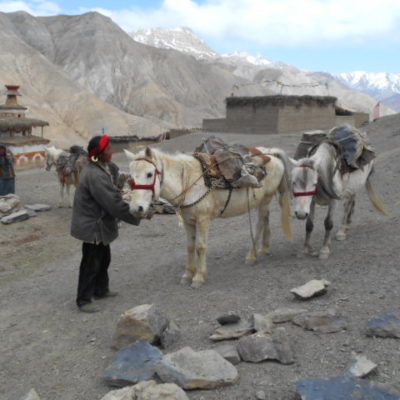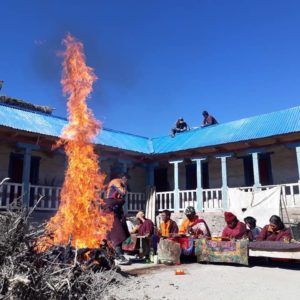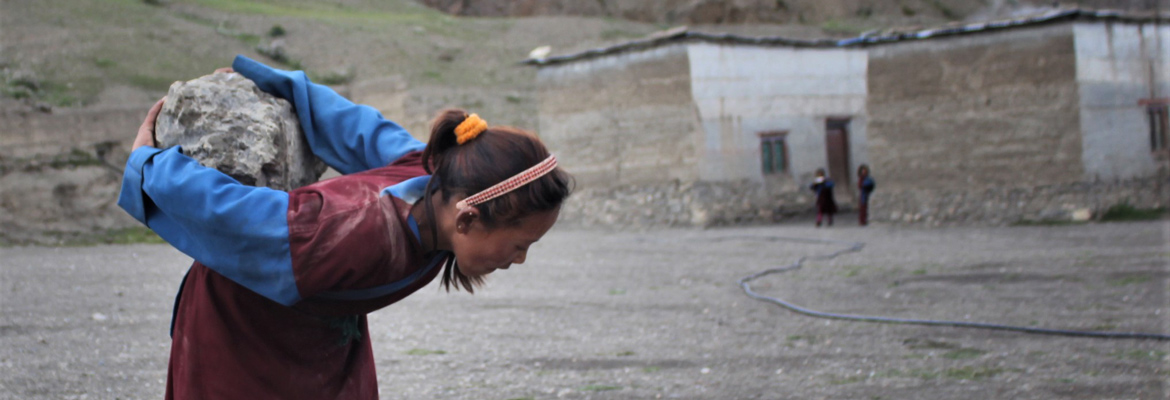
photo credit – FreundeNepals
Infrastructure Repairs, because the Climate is Changing
The Nepali Times notes that, ‘Nepal is in the top ten countries in the world most at risk of climate change, even though its carbon footprint is among the lowest in the world’.
The increasingly severe and unpredictable weather of climate change is a growing threat on this high altitude desert. Heavy rain was once an anomaly here.
There are no trees here, and wood is prohibitively expensive, so buildings are constructed of pounded clay. The flat roof is made of cham (willow / poplar sticks), stone and earth. This traditional building method worked for generations, but the extreme summer rainfall of the last few years is causing structural damage. They have started adding a layer of plastic in an attempt to lessen water damage.

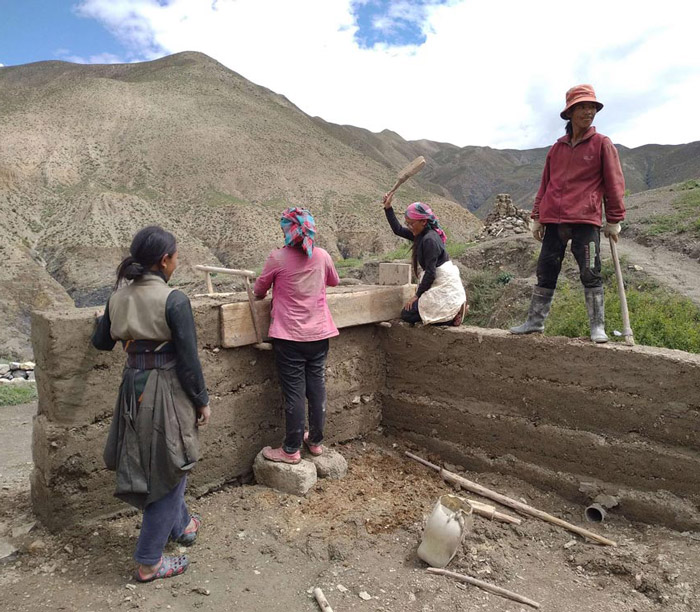
The walls of the schools and courtyards are made of tamped clay.

Stones protect the foundation from erosion

The stones are collected from the hillsides.
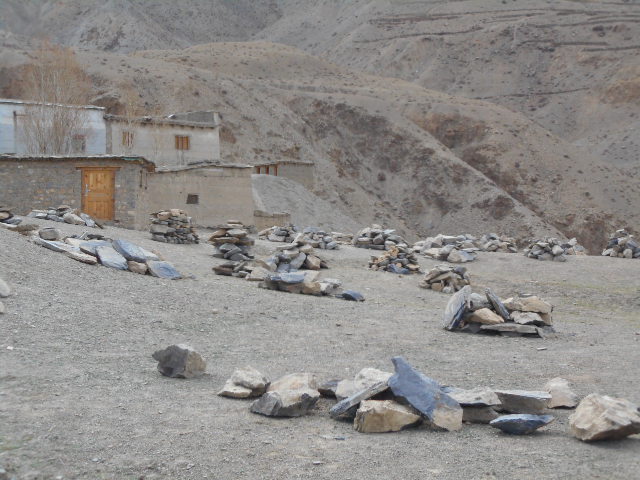

Everybody helps!


Leaking roofs weaken the pounded clay walls.
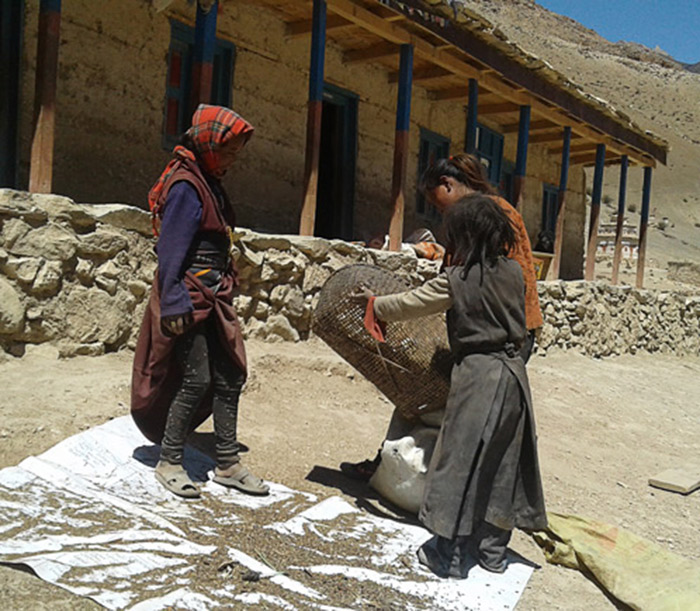
A paste of dung and mud is used to fill holes in the school walls.

The government does provide occasional support for school infrastructure, but it is insufficient. The schools rely on your kind support!

Repairing and/or Replacing Leaking Classroom Roofs
The wood beams for roof repair are very expensive. The wood must be transported from the Lower Dolpo by yak or mule.
The last few years have brought extremely heavy rainfall in spring and summer. The plan at Saldang School is to fix / stabilize school roof structures and to use plastic to avoid further water damage. The final clay surface is sloped to provide drainage from the roof surface.
Repairs to Compound Walls
The wall defines the property boundary; it gives the children a defined place to play and keeps random animals and people from wandering through – including gawking tourists!
The wall is primarily made of pounded earth. The rocks protect the foundation from erosion. Rocks are not available in the immediate vicinity so have to be brought down to the village from higher up the mountain by horse or yak.

Tiling School
In 2020 extremely heavy summer monsoons caused severe flooding and erosion. Half of Tiling School’s outdoor compound was lost and several classrooms were damaged. The villagers are very concerned because the rain and flooding is worse every year. This year they lost three precious horses to the flood.
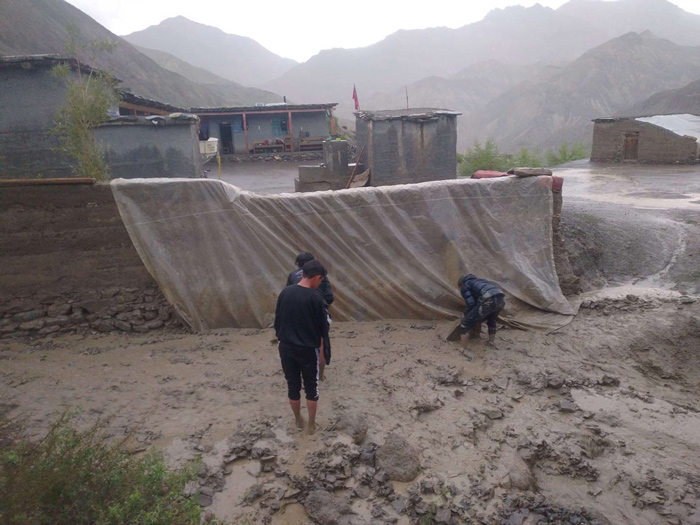

The Classrooms at Ku School
Ku School currently has four classrooms, two of which are in critical condition. The walls are cracking and are in danger of collapse. Classes have been doubled up in the remaining rooms.
Komang School, an amazing story!
Amazing because the Dolpo is so far out of the political mainstream, funding like this never happens!
In 2018, after lobbying the government for several years, the school received a grant of 600,000 Nepalese rupees (~$6,500) to install a metal roof over the school.
The first image is the school with the original flat roof of willow sticks, stone and earth.
They chose a blue roof because, in Buddhism, blue symbolizes Peace.
Unfortunately, Covid has made it unlikely that the government will be granting other schools the money for a metal roof.
photo credit – FreundeNepals
“Only a life lived for others is a life worthwhile.”
― Albert Einstein









